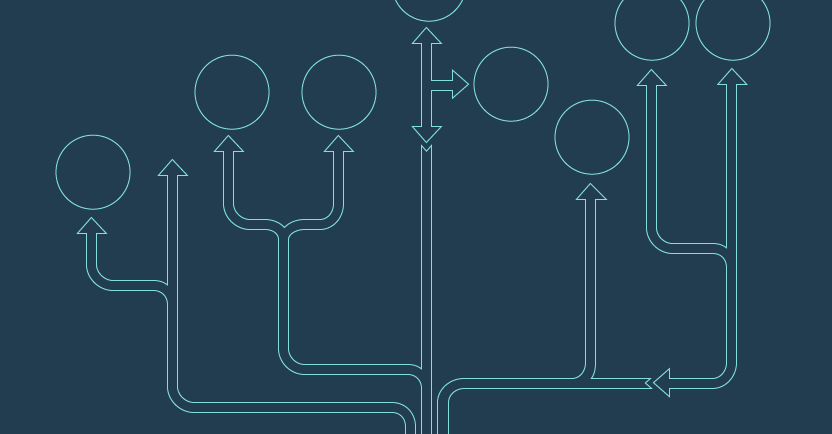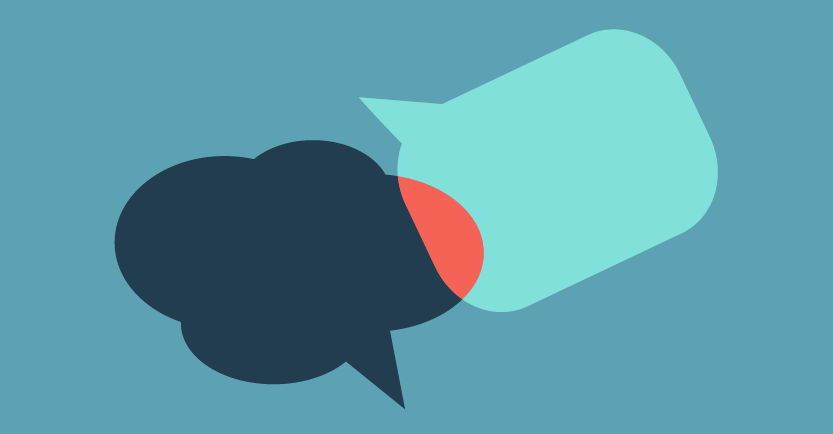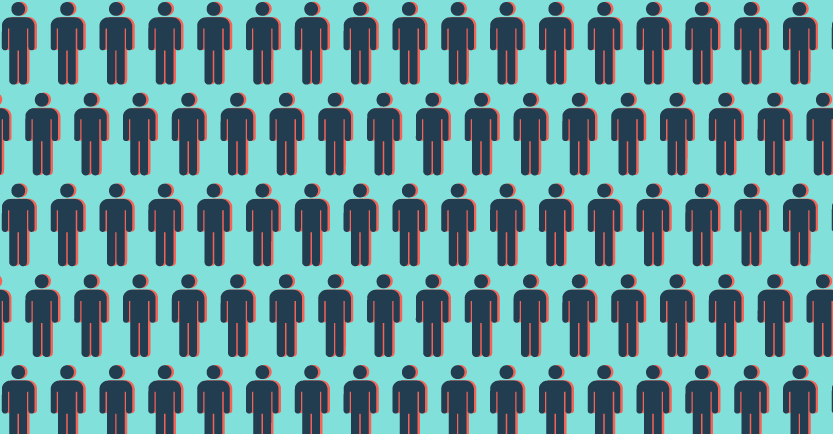UX for beginners: a practical guide. Part 1

The first part of the translation deals with what UX is, how usability differs from visual / graphic design, and what needs to be done when starting to work on the product interface - whether it be a mailing list , web application or offline service. This is a good material for those who embark on the development of this area, and want to figure out "how things are arranged here."
Introduction to UX Design
Starting to learn a new discipline is exciting and even scary. However, when it comes to designing user experience and how to become a usability player, it is especially difficult for beginners to understand how to start exploring this area.
')
What is the reason?
Usability is an area that is considered extremely important in the development of a digital product, but for many it remains mysterious due to its relative novelty and constant development. For a beginner, even acquiring skills for successfully designing interfaces can seem like an overwhelming task.
You probably already know that this activity is currently gaining momentum. More and more companies, both among startups and among large corporations, are hiring an interface designer. The current decade in the press is called the "decade of design." The fact is that the number of digital products and services is steadily growing, and with it the need to improve usability is growing.
Designing a UX is not only exciting, but also just a good deal.
Reveal the secrets of designing UX
In this material there are not only theoretical positions, but also practical tips that will help you to become a usability player. We will start with the basics and, above all, answer basic questions, such as “What is UX design?”. Later we will delve into the process of professional interface design and touch on topics such as User Audience Research, Design and Testing. To give a clearer idea of how to become a usability player, we have prepared several practical tasks for you that you can do yourself.
What is usability design?

The official definition of user experience is:
“Perceptions that a person has when using and / or intended to use a product, system, or when receiving a service” ( ISO 9241-210: 2010 , subsection 2.15).
When it comes to designing UX, the definition includes techniques and ways in which the designer can improve usability. Directly the “design” itself is aimed at increasing the utility, usability and efficiency of the product or service in the user experience.
Visual design is how a product looks, and usability is how it is perceived. But that is not all. Usability includes all aspects of user interaction with the company - from customer service to product quality. Keep in mind that many UX designers use the terms “product” and “service” interchangeably.
Wikipedia defines UX design as:
"The process of increasing user satisfaction from interacting with the product by increasing its convenience, ease of use and accessibility."
Every time you interact with a product, software or an object, you perceive it as a user. So, the key task of designing UX is to make this experience as successful as possible. A usability player must, among other things, be the “glue” that holds the entire team, transferring projects to developers, who then implement them.
The ultimate goal of designing a UX is not just satisfying user requests. The design process aims to help the product achieve its business goals and ensure that these goals coincide with the user's goals. Which implies the following question:
Why do we design interfaces?
Designing interfaces gives the company two main advantages:
- It has a positive effect on the perception of the product by the user.
- A successful user experience improves product acceptance.
These are the main goals of interface design:
- Understand the goals of potential customers and the context of use of the product.
- Based on customer goals and context of use, develop a product, service or application within the limits of business and technology.
Thus, we are engaged in the design of interfaces in order to achieve the stated goals - satisfied customers and high sales.
The first thing a usability thinks about is how to combine user goals with business goals. For example, if the user's goal is to purchase a product, the company should make this purchase useful, convenient and enjoyable.
- Useful : You need to satisfy the need of the client, that is, solve his problem.
- Convenient : The high level of usability should be obvious so that customers understand the scope of your product or use of the service.
- Pleasant : It will not be superfluous if the purchase of your product gives the customer joy.
If the purpose of the user is to obtain information, then the company should provide reliable data, thereby instilling confidence in the buyer, and the staff should respond politely to questions asked by phone. A satisfied customer who has received all the information of interest to him will return, but a disappointed person will not.
- If the client’s goal is achieved (that is, he easily and quickly found what he was looking for), then he will have a pleasant impression of your product.
- If the client has a good impression, then he is more likely to make a purchase or recommend the product to his friends.
- When a customer returns to the site, buys your product or tells friends about it, sales and conversion rates increase.
A brief history of UX

In recent years, the term “UX Design” has become close in meaning to technology and software, but this has not always been the case. Initially, “user experience” was understood simply as an experience that a person has when using the system.
The term “UX Design” was introduced in 1995 by Donald Norman (Don Norman), who at that time served as vice president of the advanced technology group at Apple. He said:
“I invented this term because I thought that“ human interface ”and“ usability ”were too narrow terms. I wanted to use all aspects of the user experience of interacting with the system, in particular with the industrial design of the product, its graphics, interface and physical contact. ”
In addition, Norman wrote the book "Design of familiar things", in which for the first time convenience and functionality were put above aesthetics. His work is still very popular in design circles. Interest in designing UX has grown, and the term itself has become generalizing for a number of different areas, such as User Audience Research, Information Architecture, Usability Development, Service Design, etc.
What is usability?
Usability is the ease of use and development of an object created by man.
This concept is directly related to the reasons why we design interfaces - because usability has a positive effect on user experience. The easier it is to master and use the product, the better the user experience. But the product should not only be convenient to use - it should solve the problem of the client. And in most cases the usability's job is to figure out what users need.
How the interface designer sees the world
By learning the basic principles of UX design, you can “get into the head of an interface designer” and see the world through his eyes.
Artist and usability Allison House (Allison House) talks about his approach to work:
“When I design UX, I repeat the mantra:“ Thoughts are wider, prioritize, look deeper. Study the situation, determine what is important, and start solving tasks in order of priority. ”
Designing a UX is an activity aimed primarily at people, which means that the key skill of a UX designer is the ability to understand the needs and behavior of users of a site, application, or product. He should strive to ensure that these needs and desires are consistent with the business goals of the company for which he works. As we mentioned earlier, a usability player always tries to make each action performed useful, convenient and enjoyable for the user.
Required usability qualities
Empathy is the ability to understand why people act in one way or another. In order to design usability, you need to be able to put yourself in the shoes of other people. This is probably the most important quality to work in this area, and you need to learn to understand the actions of other people. Contrary to popular belief, not everyone possesses this ability by nature.
Inquisitiveness is the desire to find out why people act in one way or another.
Clarity of expression is the ability to explain complex concepts in an accessible form for those who are not familiar or have little knowledge of this field.
The prototype designer in the RED laboratory of Manulife, Al Rushdan Tariq (Ali Rushdan Tariq) explains:
“Good usabilityists think about people first. They worry if they find out that their customers are uncomfortable using the product, and they are trying to fix it. Moreover, good usabilityists do not forget that they should also pursue clearly defined business goals on the way to improving people's lives. ”
UX design process
User research
User audience research is the designer’s starting point in every project. It helps us get to know the users, their behavior, goals and needs. The study also shows how easy it is to navigate in our system, what difficulties users have and, most importantly, what sensations they have when interacting with our product.
User audience research is a fundamental element of UX design. Regardless of whether you work in a large corporation, where a dedicated team conducts this research for you, or is the only usability in a startup, you cannot miss this part of the design process. As a UX designer, by definition you need to know everything about your product. However, your intuition can not always accurately determine what users will like, so conducting research with real users is so important for a successful design.
Nate Bolt, founder of Ethnio's user experience research lab, shares advice:
“Do not be afraid to apply creativity not only to the design process itself, but also to the study of the user audience. The way you conduct interviews, work with the team and present the results obtained are all possibilities to think creatively. We are accustomed to consider designing as a part of the creative process, but the study should be no less creative. ”
The key here is empathy. You will work with groups of users with different levels of training and with different experiences behind them. Your job is to understand why they act in one way or another, and not try to change their behavior or influence it. You must make your product useful to them. As a novice UX designer, it is very important for you to show empathy at every opportunity that arises.
The study has other benefits. The irrefutable results of an extensive user research can help get support from colleagues or supervisors when demonstrating designed solutions.
In this section, we will look at the skills needed to conduct a user audience study, and discuss the importance of this step in the usability design process.
Peter Merholz, a usability and product manager at PeterMe.com, gave this advice to better understand users:
“Do not confuse the process itself with the result - to know such UX design elements as persons (characters),“ flows ”(flows) and UI layouts is important, but this is not enough to form a successful user experience. The way of thinking is more important - you have to look at the world through the eyes of users and do everything possible so that your work has a meaning for them. ”
Why user audience research is so important
“The study does not make sense if it is not conducted properly. The transition from exploring research to design is the most important part of usability work, ”Harry Brignull, a UX design specialist at 90percentofeverything.com.
When in our work we rely only on personal experience or assumptions, we often miss what this experience could be for other people, in particular for our users. This means that we may miss opportunities to improve our service or product, make them useful to users. In addition, it may seem to us that navigation in our system is quite simple and convenient, but we have been working in it for a long time and know it well.
Simply put, our users know our product not as well as we know it.
To become a usability player, you must always look at the product from the user's point of view; and you can learn this only when working with real users during in-depth study of the audience.
It allows us to find out what customers feel when interacting with our product, and to check whether our product really helps them achieve their goals.
During the study, the interface designer will gather information, using various sources and means, to create a positive user experience. We will look at some of these methods below.
Here is what Leff UX methodology author Jeff Gothelf said about the study of the user audience:
“Over the past five years, the nature of software has moved into a state of continuous and consistent improvement. Due to this, designers have a wonderful opportunity to constantly keep in touch with the audience. Continuous communication — small research done frequently and regularly — helps to hear the voice of the client in the decision-making process. In essence, it guarantees that this research, as well as the development, design or collection of requirements, will take its place in the process of iteratively shaping the design and development of the product. ”
Why we start with user research
We begin the UX design process with a user audience study, because otherwise our work will be based only on our own experience and assumptions. And it will prevent to achieve objectivity, because our opinion may differ from the opinions of customers. The study of the user audience provides us with the data necessary to create a product. Without this data, we cannot get to work.
Since research, we save ourselves a lot of work, time, money and resources. As a result, we will only have to make a few amendments to our project. But if we conducted the research after we had finished all the work, then we would have to make huge changes to the interface in order to meet the requests of the interviewed users. The same goes for the redesign. Those who are working on the redesign of an existing product have an advantage - they see how users perceive the existing system.
According to Neil Turner, the author of the UxfortheMasses blog, a good basis is the key to successful design:
“Properly conducted user research is the key to creating a positive user experience. Designing without research is the same as building a house without a solid foundation. Soon, your design will begin to crack at the seams and eventually fall apart. ”
What does user research include
It is necessary to designate the difference between listening to users and observing their behavior. Both of these methods provide valuable information during the study. The mistake of newbies is that they concentrate too much on listening to users, while observation allows you to reveal more information in a shorter period of time.
Interview

An interview with a user is a meaningful dialogue between the interviewer and a user from a potentially interested group. It is carried out to find out the needs of the user and his requirements for the product. Interviews can be conducted directly during the interaction of the client with the product; The interviewer may ask questions to find out what the user thinks about during the navigation process. Ask your customers about the problems they face when using the product. You can even offer them to describe what the perfect product would look like in their presentation.
Online surveys

An online survey is a method of gathering information, which is a set of questions sent to your target audience via the Internet, usually in the form of a questionnaire. The duration and format of the online survey may vary depending on the project, but in any case, the data obtained are entered into the database and subsequently studied by a usability expert or a usability team. Before you begin to prepare your questionnaire, conduct several interviews to fully understand the subject area. This will help you to put more precise questions.
Creation of persons

Persons are not your desired customers. These are the clients that you have or may have. In the framework of web design, a person is defined as a description of a fictional person within a specific user audience. We develop user personalities on the basis of qualitative and quantitative research data of a user audience, as well as on the basis of the obtained web analytics.
The use of persons is effective if they:
- Truly reflect the motives, goals and needs of real people.
- Give a clear picture of user expectations.
- Show how users interact with the site
- Represent the vast majority of users of the site
Peter Morville, known as the founder of Information Architecture, gave advice on how to create persons:
“Portraits and profiles of user types (as well as their goals and behavioral stereotypes) remind all of us that we are not users, and serve as a compass in designing and developing.”
User Testing
We will look at this topic in more detail later, but keep in mind that when redesigning an existing product (as opposed to a new product design), such testing can serve as a valuable source of information that allows identifying product flaws from the user's point of view.
In his statement, a usabilityist and a strategy specialist from Berlin, Hani Ritsk (HanyRizk), emphasizes the importance of researching the user audience in the UX design process:
“Designing without a user audience study completely contradicts the concept of UX design. This study helps UX designers and other stakeholders understand users and their needs, as well as determine their product requirements. Simply put, it replaces assumptions in the data design process. ”
UX Design Processes: Design

Design Usability
As Steve Jobs once said:
“Design is not how the product looks and perceived. Design is how it works. ”
When it comes to product design, this truth, which Steve Jobs so precisely articulated, is often forgotten. Anyone will recognize Apple products by its elegant and unique look. The design of iPhones and MacBooks is so good that technical companies around the world are trying to copy it.
However, Apple products have received international recognition not because of their aesthetic properties. And, although the design of these devices is easily recognizable and functional, it is the user experience and usability of these products that distinguish Apple from its competitors to this day make the brand popular. Currently, large and small companies around the world repeat the success of Apple, focusing its efforts on the usability of its products.
Of course, the aesthetic properties of the product enhance its attractiveness. However, by designing UX, you will quickly come to the conclusion that if a product does not work properly, its appearance doesn’t bother the user. It should not be forgotten that the final success of the product depends not only on your design, but also on its implementation by developers, as well as on project management. This is another key skill required for usability - the ability to work in a team. We'll talk more about this in the last section.
Designing a positive user experience involves careful planning of the cycle of interaction of the product with the customer and assisting him in an intuitive search. In any case, customers will interact with the product based on their previous experience with other products. As an interface designer, your task is to customize the product / service under the already familiar client behavior.
The design of your product implies functionality and usability, not colors and images (they are later selected by the visual designer). When you determined the expectations, goals and desires of your customers, based on the results of the research conducted by the user audience, you should think first of all about the functionality and usability of the product or site.
Do not forget that any customer action should be useful, convenient and enjoyable. If you do not solve the user's problem, he will not look at the colors or the pictures.
Dan Saffer, interaction design specialist and writer, shared other tips. He said:
“Never forget why: why you design this product, why people will use it, why you made this or that decision in the design process. Write these reasons on paper. Tell about them to anyone who will listen. Put them in your layouts and presentations. This “why” should set the direction for the whole process, since it is this that determines the meaning, history and theme (design) of the product.
The second part deals with the rest of the UX design processes: modeling, prototyping, usability testing, and what place the UX designer takes in the team of any project.
To be continued...
Source: https://habr.com/ru/post/301290/
All Articles